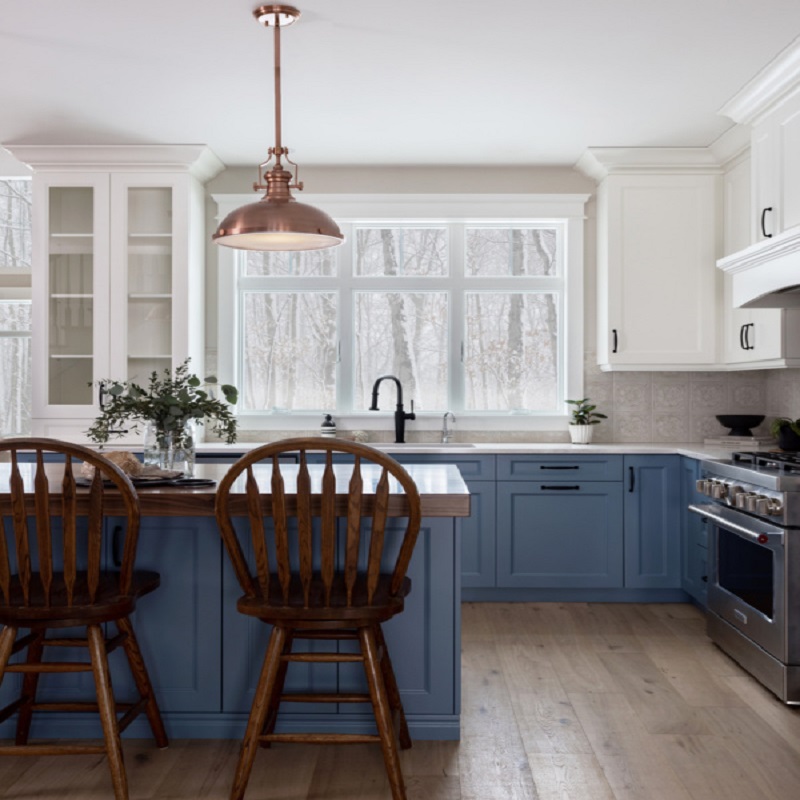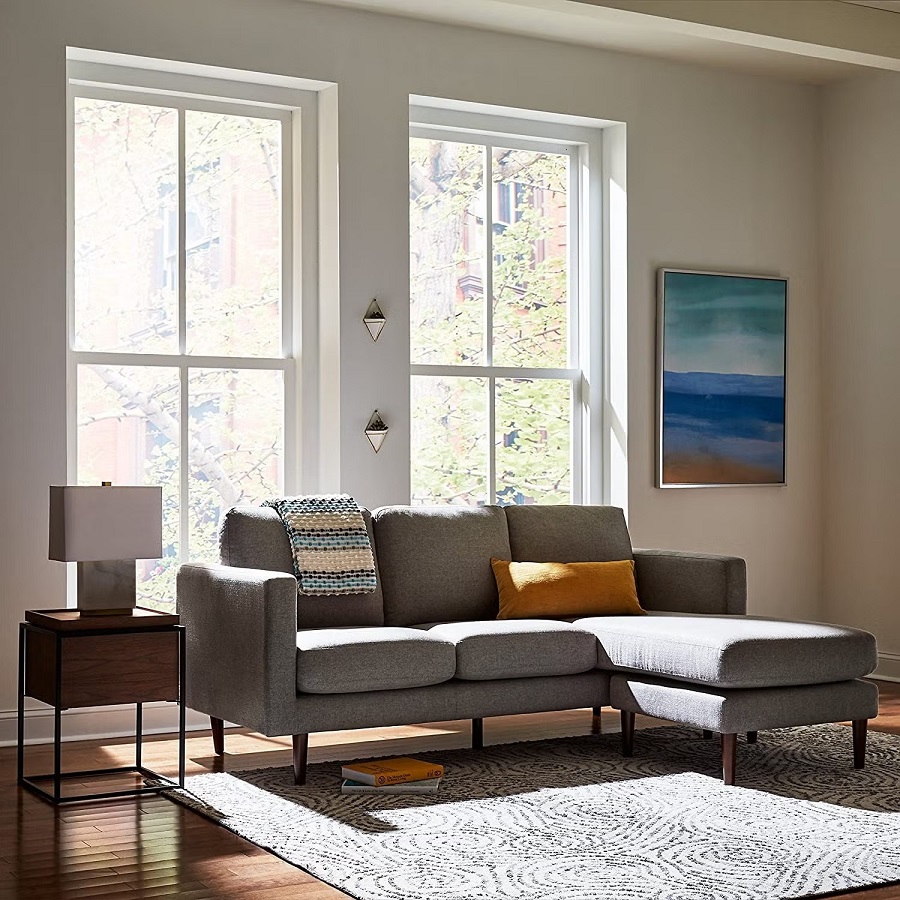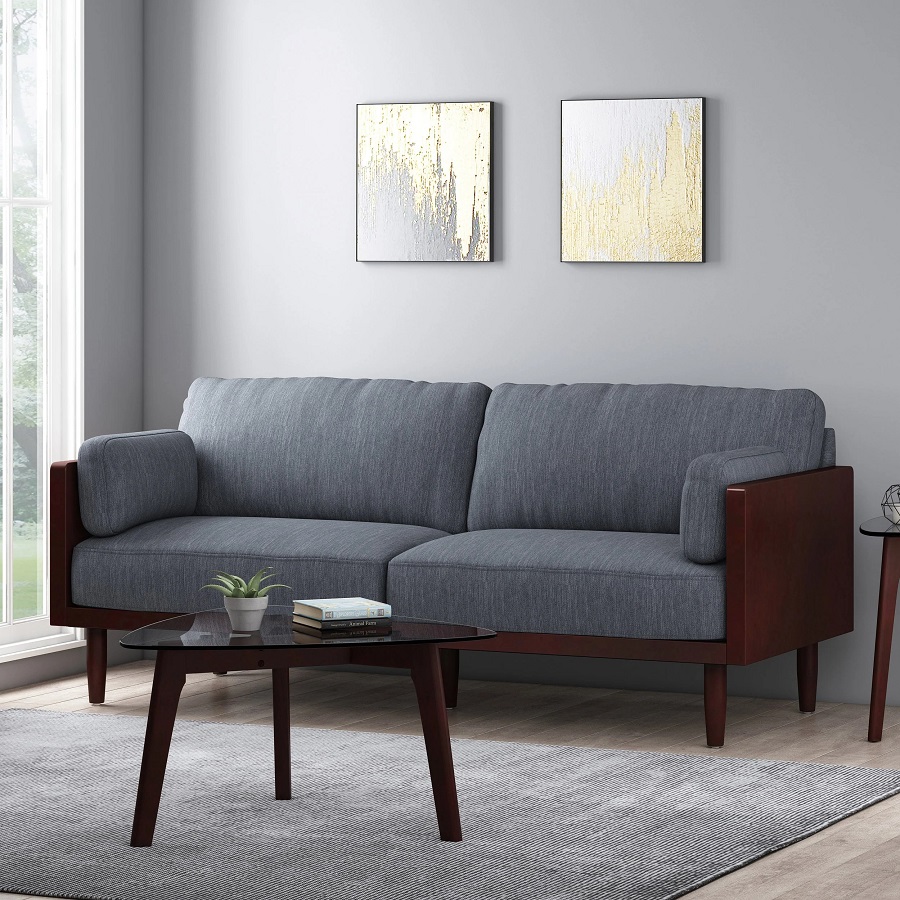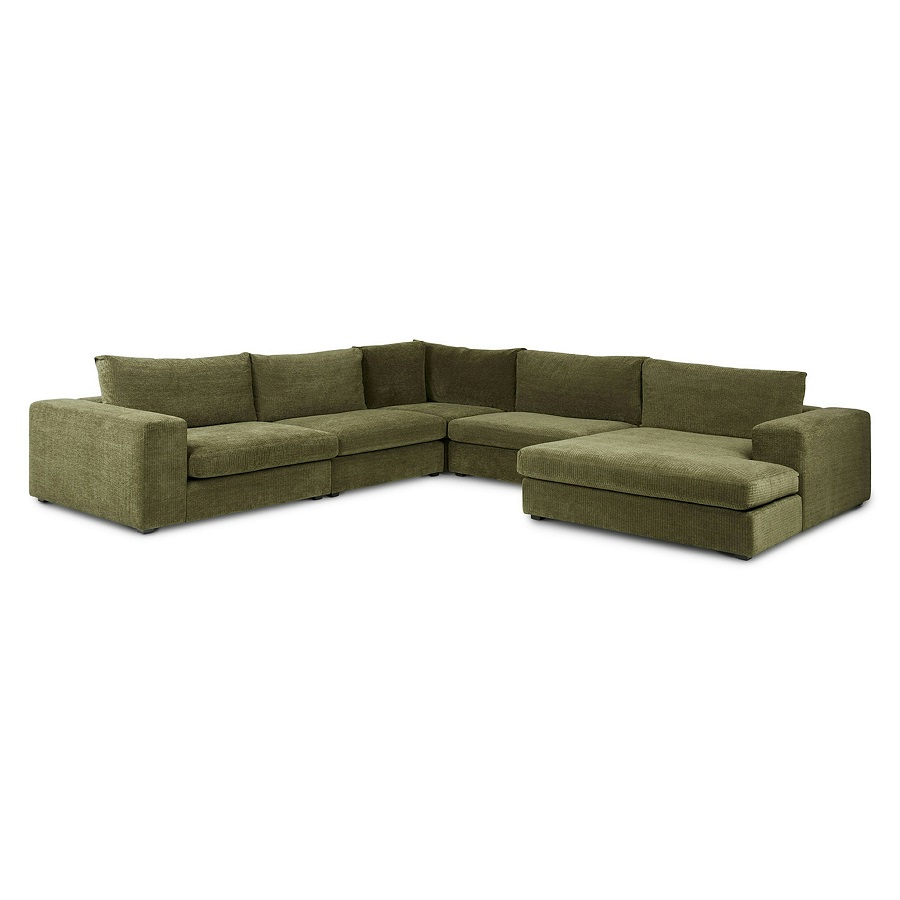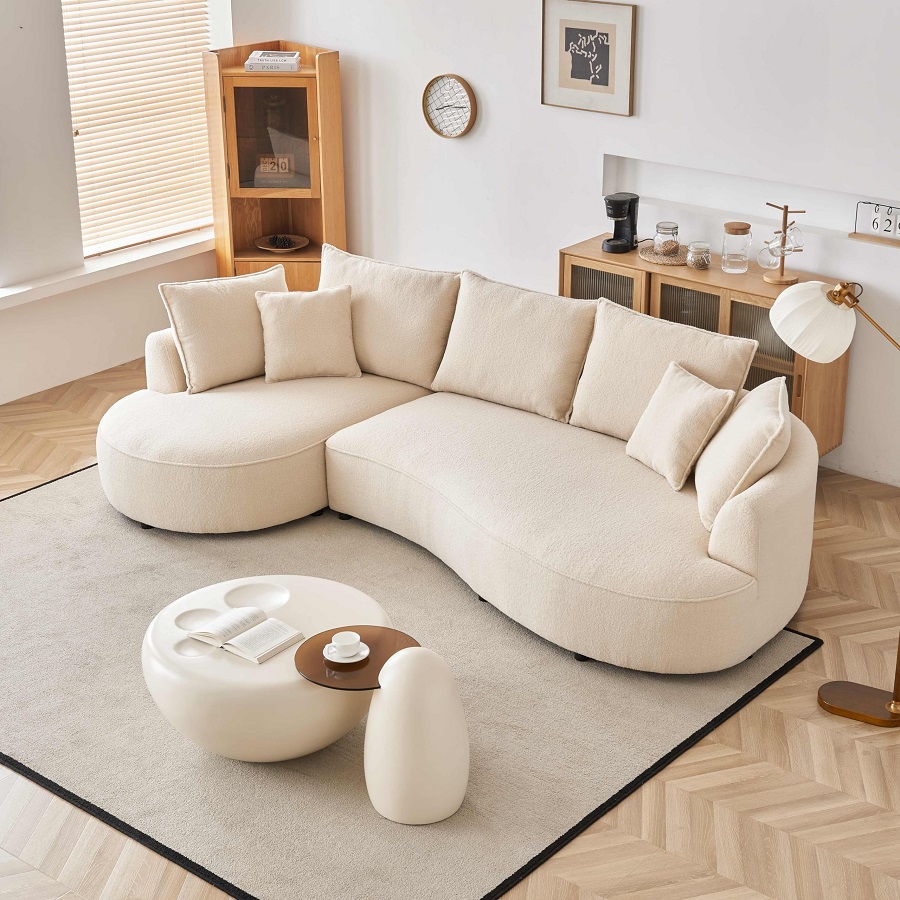Introduction to Blue and White Kitchen Cabinets
The Appeal of Blue and White
Blue and white kitchen cabinets have become a popular choice in modern interior design, combining classic elegance with contemporary flair. The striking contrast between the deep, rich hues of blue and the crisp, clean whites creates a visually appealing space that is both refreshing and timeless. This color scheme can adapt to various design styles, from coastal and nautical themes to sophisticated urban settings. By exploring the allure of these colors, homeowners can create a kitchen that is not only functional but also a statement piece in their home.
Benefits of Choosing Blue and White
Opting for blue and white cabinets offers several benefits. The white component of the palette can make a kitchen appear larger and more open, which is especially advantageous in smaller spaces. On the other hand, blue tones introduce a sense of calm and tranquility, making the kitchen a more inviting and relaxing space. Additionally, this color combination allows for easy incorporation of other hues and accessories, making it a versatile choice for various design elements and trends.
Choosing the Right Shade of Blue
Understanding Blue Tones
When designing with blue and white cabinets, selecting the right shade of blue is crucial. Blue tones can range from deep navy and cobalt to soft pastels and teals. Each shade brings a different mood and aesthetic to the kitchen. Navy blue, for example, can offer a sophisticated and classic look, while lighter blues, like powder blue, can create a more airy and serene atmosphere. Understanding the impact of different blue shades on your space helps in achieving the desired effect and complements the white cabinets effectively.
Matching Blue with White
The shade of white used in conjunction with blue cabinets also plays a significant role. A pure, bright white can create a stark contrast with darker blue tones, emphasizing the color contrast and making a bold statement. Alternatively, an off-white or creamy hue can soften the look and provide a more cohesive and subtle blend. Balancing the intensity of blue with the right shade of white ensures that the kitchen space remains harmonious and visually pleasing.
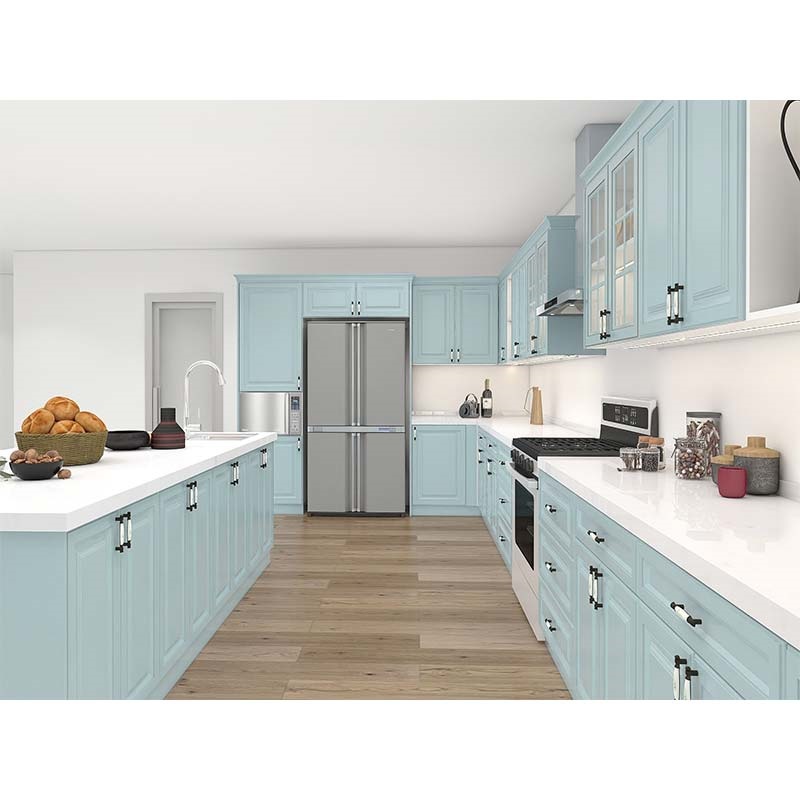
Incorporating Patterns and Textures
Adding Depth with Patterns
Integrating patterns into your blue and white kitchen design can add depth and interest. Consider incorporating patterned tiles for the backsplash or floor, which can enhance the blue and white theme while introducing additional visual elements. Patterns such as geometric shapes, chevrons, or classic subway tiles can complement the cabinetry and create a dynamic yet cohesive look. When selecting patterns, ensure they align with the overall design theme and do not overwhelm the space.
Utilizing Textures for Contrast
Textures also play a critical role in designing a kitchen with blue and white cabinets. Combining smooth, glossy cabinet finishes with textured elements like shiplap walls or rustic wooden floors can create a balanced and engaging space. Textured elements add dimension and warmth, contrasting with the sleekness of the cabinets and providing a more inviting and layered look. Be mindful of achieving a harmonious blend of textures to avoid a cluttered appearance.
Choosing the Right Hardware
Hardware Styles and Finishes
The choice of hardware for blue and white cabinets can significantly impact the overall design. For a classic look, opt for polished chrome or brushed nickel hardware, which complements both blue and white tones effectively. Alternatively, for a more contemporary feel, consider matte black or brass hardware, which can add a touch of modern sophistication. The style of the hardware—whether it’s sleek and minimalist or ornate and detailed—should align with the overall design theme of the kitchen.
Coordinating with Other Elements
Ensure that the hardware chosen coordinates with other elements in the kitchen, such as lighting fixtures and appliances. Consistency in finishes and styles helps in creating a cohesive look. For example, if your appliances have a stainless steel finish, opting for similar-toned hardware will create a unified appearance. Additionally, coordinating hardware with cabinet colors can enhance the visual appeal and ensure that all design elements work together seamlessly.
Integrating Blue and White in Other Kitchen Elements
Incorporating Blue and White Decor
To complement blue and white cabinets, integrate these colors into other kitchen elements. Consider using blue and white dishware, textiles, and decorative accessories such as vases and artwork. This approach ties the color scheme together and extends the theme beyond the cabinetry. For example, blue and white patterned curtains or a rug can enhance the overall design and create a cohesive look throughout the kitchen.
Blending with Countertops and Backsplashes
When selecting countertops and backsplashes, choose materials that complement the blue and white cabinets. Marble or quartz countertops with subtle veining can add elegance and tie in with the cabinetry colors. For backsplashes, consider materials like subway tiles or mosaic patterns in shades of blue and white to create a harmonious and stylish look. Ensure that these elements blend well with the cabinet colors and contribute to the overall aesthetic of the kitchen.
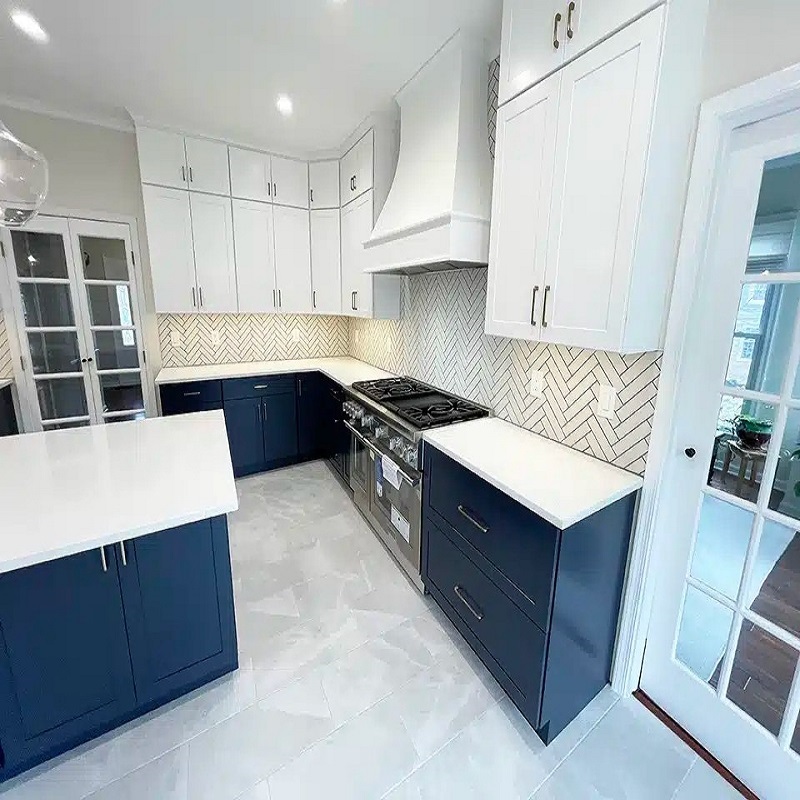
Designing for Different Kitchen Sizes
Small Kitchens
In smaller kitchens, blue and white cabinets can create a sense of spaciousness and brightness. Opt for lighter shades of blue and white to keep the space feeling open and airy. Incorporate reflective surfaces and ample lighting to enhance the effect. Additionally, using open shelving or glass-fronted cabinets can help in making the space feel less cluttered and more open.
Large Kitchens
For larger kitchens, deeper blue tones can add richness and character without overwhelming the space. You can experiment with bolder patterns and textures in cabinetry and other elements. Incorporating an island or a contrasting color for specific areas can add interest and functionality. Ensure that the design remains balanced and cohesive, with attention to detail in hardware and decorative elements.
Maintenance and Care for Blue and White Cabinets
Cleaning and Upkeep
Maintaining blue and white kitchen cabinets involves regular cleaning to keep them looking their best. Use mild, non-abrasive cleaners and soft cloths to avoid damaging the finish. For white cabinets, which can be prone to showing stains, frequent cleaning is essential. For blue cabinets, consider using a cleaner that matches the finish to prevent discoloration. Regular upkeep ensures that the cabinets continue to enhance the kitchen’s appearance over time.
Dealing with Wear and Tear
Over time, blue and white cabinets may experience wear and tear. Address scratches and scuffs promptly by using touch-up paint or markers designed for cabinetry. For more significant damage, consider professional refinishing or repainting. Ensuring that any issues are addressed quickly helps in maintaining the integrity and appearance of the cabinets, ensuring they remain a stylish feature of your kitchen.
Conclusion
Creating a Cohesive Design
Designing with blue and white kitchen cabinets offers a range of possibilities for creating a beautiful and functional space. By carefully selecting shades, incorporating patterns and textures, and choosing complementary hardware and accessories, you can achieve a cohesive and stylish kitchen. Whether you have a small or large space, the blue and white palette provides a versatile and timeless option that can enhance the overall design of your kitchen.
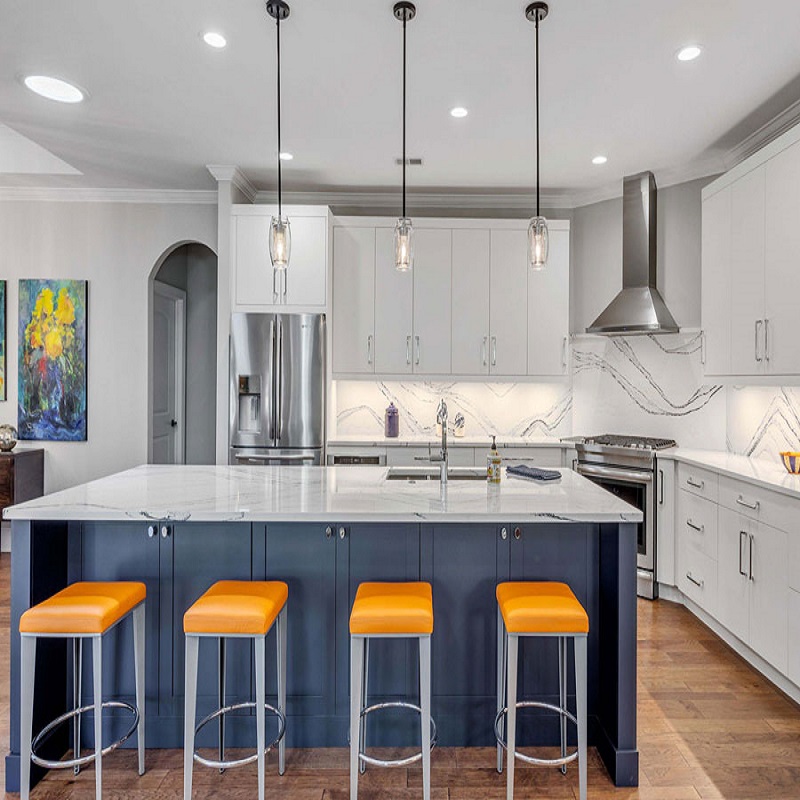
Embracing the Color Scheme
Embrace the elegance and versatility of blue and white kitchen cabinets by thoughtfully integrating these colors into your design. With attention to detail and a clear vision, you can create a kitchen that not only meets your functional needs but also reflects your personal style. The ultimate goal is to design a space that you enjoy and feel proud of, making your kitchen a true centerpiece of your home.






